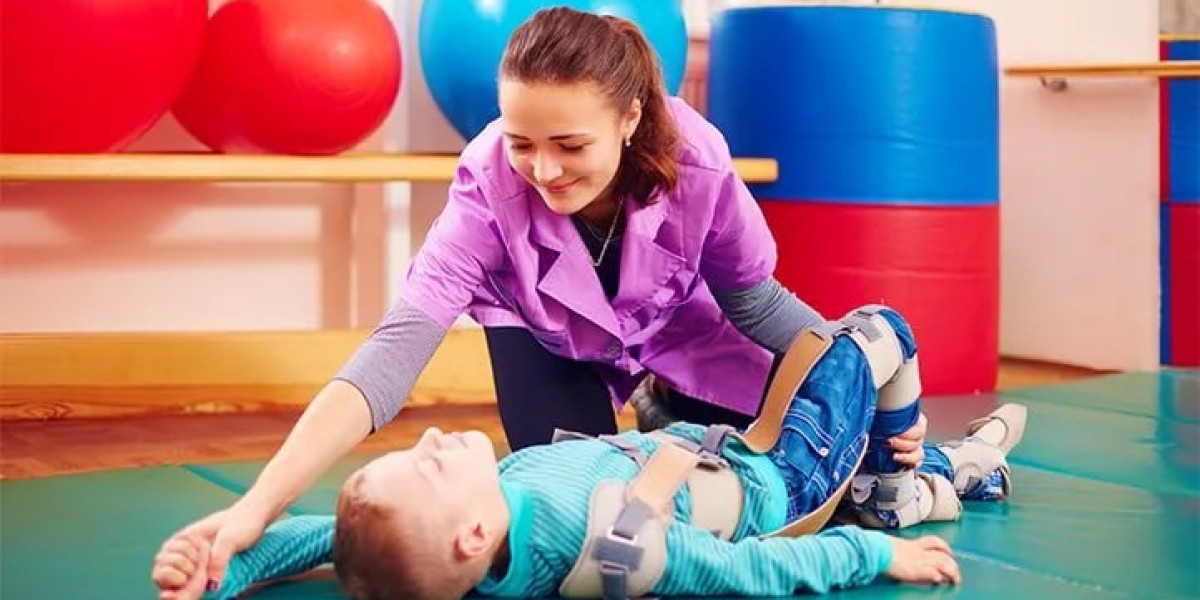Introduction
Cerebral Palsy (CP) is one of the most common motor disorders affecting children. It is a neurological condition caused by abnormal brain development or damage to the brain, particularly the areas that control motor skills and muscle movement. While CP is a lifelong condition, individuals with cerebral palsy can lead fulfilling and independent lives with the right treatment and care.
In this article, we will explore in detail what cerebral palsy is, its causes, symptoms, types, and treatment options. Early intervention and specialized care can significantly improve the quality of life for individuals with CP and their families.
What Is Cerebral Palsy?
Cerebral palsy is a group of motor disorders caused by brain damage that affects movement, posture, and muscle coordination. This condition typically occurs before, during, or shortly after birth. CP affects the muscles and motor skills, making it difficult for individuals to control and coordinate their movements. CP can vary in severity from mild to severe, and its impact on an individual's daily life depends on the extent of the brain injury.
While cerebral palsy is not a disease, it can result from a variety of brain-related issues that occur during pregnancy or the early stages of life. CP may affect a person’s muscle strength, fine motor control, and the ability to perform everyday tasks like walking, talking, or eating.
Causes of Cerebral Palsy
The exact cause of cerebral palsy is often difficult to pinpoint, but several factors can contribute to brain damage leading to CP. Common causes of CP include:
- Brain Injury Before Birth:
- Premature birth: Babies born prematurely have a higher risk of cerebral palsy due to the underdevelopment of the brain. The brain cells in premature babies are more vulnerable to injury.
- Infections: Infections such as rubella or cytomegalovirus during pregnancy can lead to brain damage, increasing the risk of CP.
- Brain Injury During Birth:
- Lack of oxygen (hypoxia): Oxygen deprivation during labor or delivery can cause brain damage that may lead to cerebral palsy.
- Traumatic delivery: Complications during delivery, such as umbilical cord accidents, can also result in brain injury.
- Brain Injury After Birth:
- Jaundice: Severe neonatal jaundice, which occurs when a newborn's liver cannot process bilirubin effectively, can lead to a condition called kernicterus, causing brain damage.
- Head injury or trauma: Brain damage can occur due to physical injury during early childhood, such as a fall, car accident, or abuse.
- Genetic Factors: Some genetic mutations can lead to abnormal brain development, although this is less common.
Symptoms of Cerebral Palsy
The symptoms of cerebral palsy can vary from person to person, and the severity can range from mild to severe. Some of the most common symptoms include:
- Motor Symptoms:
- Spasticity: This refers to muscle stiffness, which can make it difficult for individuals to move certain parts of the body.
- Ataxia: This condition affects balance and coordination, making it difficult for individuals to walk, stand, or perform fine motor tasks.
- Dyskinesia: This involves involuntary muscle movements such as jerking, twisting, or writhing. These movements can affect the arms, legs, and face.
- Postural Problems: People with CP often have difficulty maintaining a proper posture. This can lead to poor sitting or standing alignment, contributing to further muscle and skeletal issues.
- Speech and Language Delays: Many children with CP have speech or language difficulties. These issues can range from difficulty articulating words to complete inability to speak.
- Seizures: About one in three individuals with cerebral palsy experiences seizures. These can be controlled with medication, but they may affect the quality of life.
- Vision and Hearing Impairments: Some individuals with CP experience problems with vision and hearing, including difficulty tracking moving objects or impaired depth perception.
Types of Cerebral Palsy
Cerebral palsy can be classified into different types based on the nature of muscle tone and movement. The main types are:
- Spastic Cerebral Palsy: This is the most common type of CP, affecting about 70-80% of individuals with the condition. It is characterized by increased muscle tone (spasticity) and stiffness, making it difficult to move affected limbs.
- Dyskinetic Cerebral Palsy: This type is characterized by involuntary movements, such as twisting, jerking, or writhing. It can affect both muscle tone and voluntary movements.
- Ataxic Cerebral Palsy: This type affects balance and coordination. Individuals with ataxic CP often have unsteady movements and difficulty with tasks requiring fine motor skills, such as writing or buttoning a shirt.
- Mixed Cerebral Palsy: Some individuals exhibit symptoms of more than one type of cerebral palsy. For example, they may have both spasticity and involuntary movements.
Treatment for Cerebral Palsy
While there is no cure for cerebral palsy, a variety of treatments can help manage the symptoms and improve the individual's quality of life. Early diagnosis and intervention are crucial for achieving the best outcomes.
- Physical Therapy: Physical therapy is essential for improving muscle strength, flexibility, and coordination. Exercises are tailored to each individual to help them develop and maintain physical abilities.
- Medications: Medications can help reduce muscle spasticity, control seizures, and manage pain. Common medications include baclofen, diazepam, and botulinum toxin (Botox) injections.
- Surgical Intervention: In severe cases, surgery may be required to correct musculoskeletal deformities or to release tight muscles. Orthopedic surgery can improve mobility and reduce pain.
- Occupational Therapy: Occupational therapists help individuals with CP develop the skills needed for daily activities, such as dressing, eating, and writing.
- Speech Therapy: Speech therapy is used to improve communication skills, including both verbal and non-verbal communication. It also helps with swallowing and eating difficulties.
- Assistive Devices: Wheelchairs, walkers, braces, and other assistive devices can help individuals with cerebral palsy move more independently and perform daily tasks with greater ease.
7. Book an Appointment with the Best Neurologist at Instacare: Many individuals with CP may experience neurological issues such as muscle weakness, coordination problems, or nerve-related complications. If you’re facing any neurological concerns, it’s important to consult with a neurologist. Book an appointment with the best neurologist at Instacare for comprehensive care and personalized guidance tailored to your needs.
Conclusion
Cerebral Palsy is a lifelong neurological condition that affects movement, muscle tone, and coordination, but with timely diagnosis, proper medical care, and supportive therapies, individuals can lead fulfilling lives. While there is currently no cure, early intervention through physiotherapy, occupational therapy, speech therapy, and medical management can significantly improve mobility, communication, and overall quality of life. Support from healthcare professionals, caregivers, and community resources plays a vital role in helping those with CP reach their full potential. With the right treatment plan and continuous care, people living with Cerebral Palsy can overcome many challenges and thrive in their personal and social lives.
FAQs
1. Is cerebral palsy genetic?
In most cases, cerebral palsy is not inherited, but some genetic mutations can increase the likelihood of brain abnormalities that lead to CP.
2. Can children with cerebral palsy walk?
Many children with cerebral palsy are able to walk, though some may require assistive devices such as braces or walkers. The degree of mobility varies based on the type and severity of CP.
3. Can cerebral palsy get worse over time?
Cerebral palsy does not worsen over time, but the physical challenges associated with it may change. Some individuals experience an increase in spasticity or muscle stiffness as they age.
4. Is Cerebral Palsy a progressive disease?
No, Cerebral Palsy is not progressive, meaning it does not worsen over time. However, symptoms may change as a person grows, and complications can arise without proper therapy and care.
5. Can Cerebral Palsy be cured?
Currently, there is no cure for Cerebral Palsy. Treatment focuses on managing symptoms, improving mobility, and enhancing quality of life through therapies, medications, and assistive devices.
6. What is the life expectancy of someone with Cerebral Palsy?
Life expectancy depends on the severity of the condition and the presence of other health complications. With good medical care, many individuals with CP live long, fulfilling lives.








